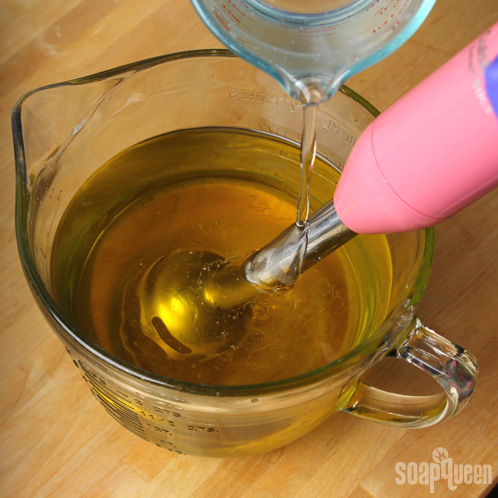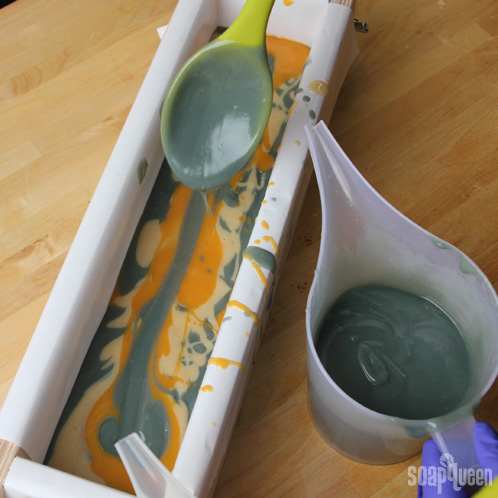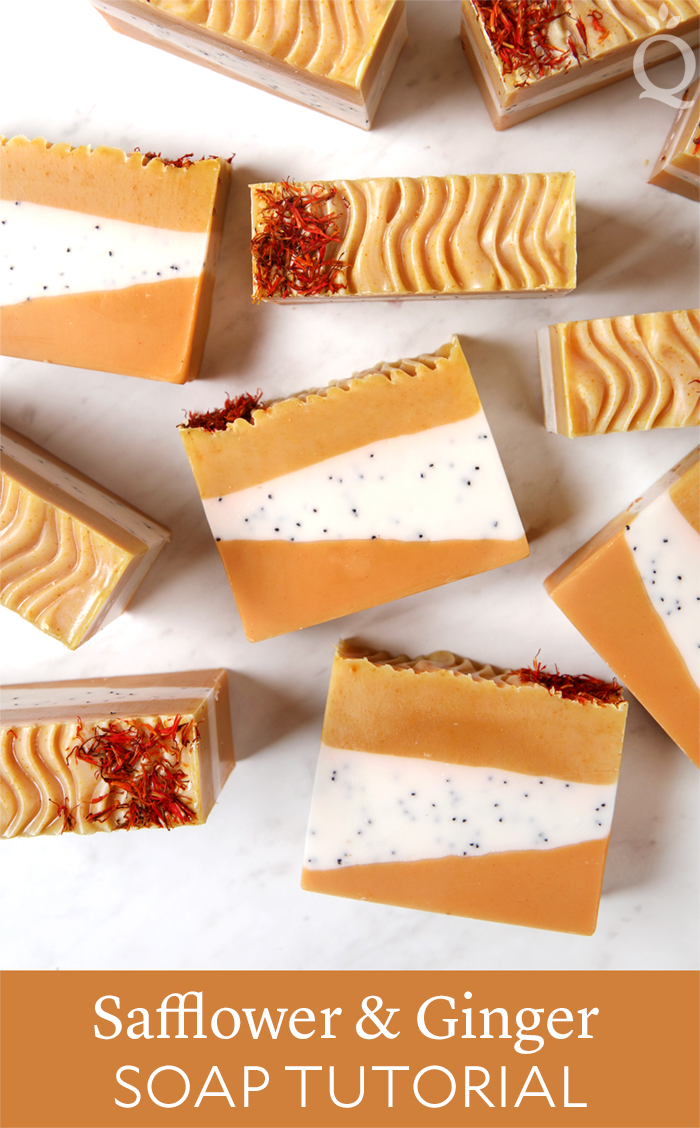
Safflower is a thistle-like plant with a variety of uses. The crop is used to make oil, dyes, and more. In this soap, safflower powder is used to give the top layer a soft yellow hue. Safflower petals are sprinkled on top for a pop of color and texture.
The layered design requires a good understanding of soap texture, also known as trace. In order to create a diagonal layer, the mold is propped up on one side and the soap is allowed to harden in the mold. Once it’s firm enough, the mold is set evenly on the counter and the remaining soap is layered on top. This requires the second and third layer of soap to stay thin and workable while the bottom layer hardens.
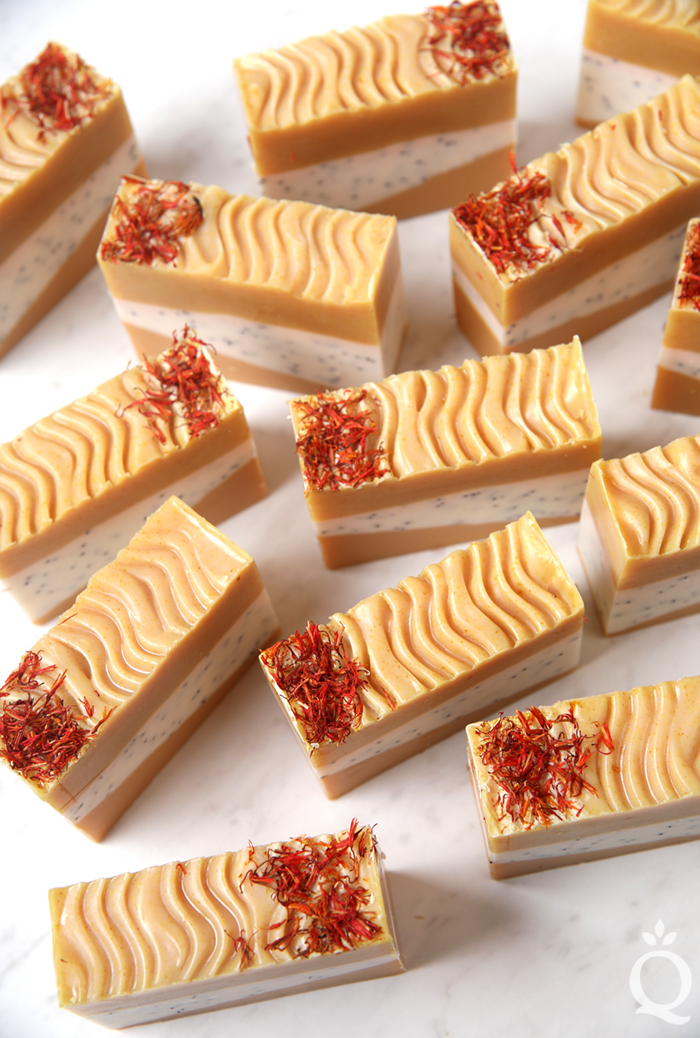
The ginger essential oil aids in the layering process. Because it accelerates, it helps the soap harden faster. The oil is added to each layer right before it’s poured into the mold, which creates firm bottom layers that are not disrupted as easily by the soap on top.
If you don’t have experience creating layers in cold process, we recommend getting a few basic layering recipes under your belt first. Good options include the Layered Handmade Soap Kit or the Pink Salt & Gold Cold Process Soap. Both have uneven layers, which are much easier to create. Even with lots of practice, we have a hard time making 100% straight layers – you’ll notice they’re not perfectly even in these bars.
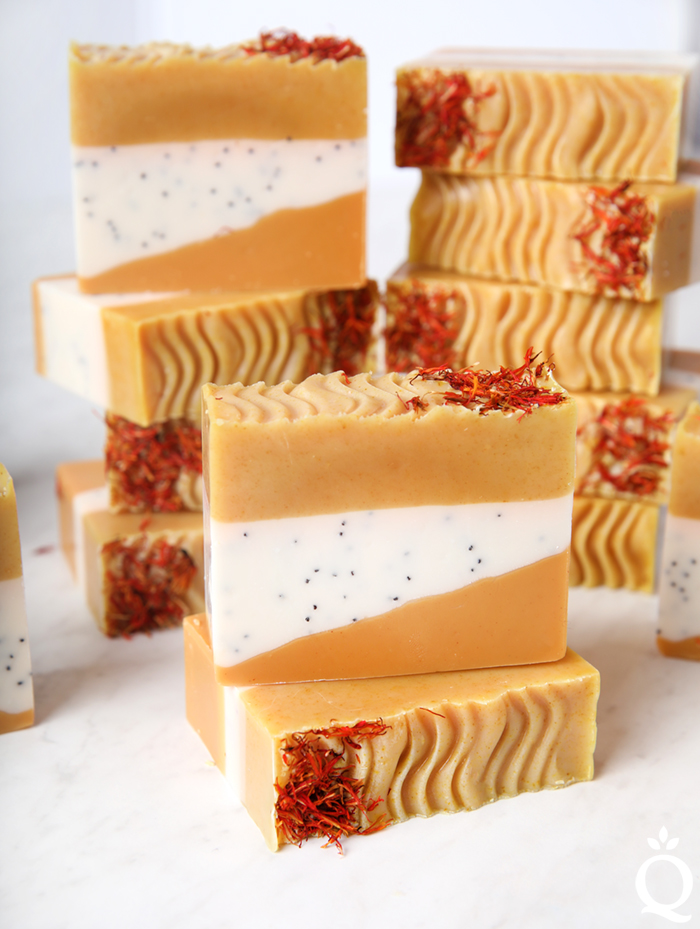
This recipe does contain a very small amount of ginger essential oil. Because it’s an expensive essential oil, we used the smallest amount possible while still being able to smell it in the final bar. The amount in this recipe does give a light ginger scent. If you want a stronger scent, feel free to use more according to the Bramble Berry Fragrance Calculator.


